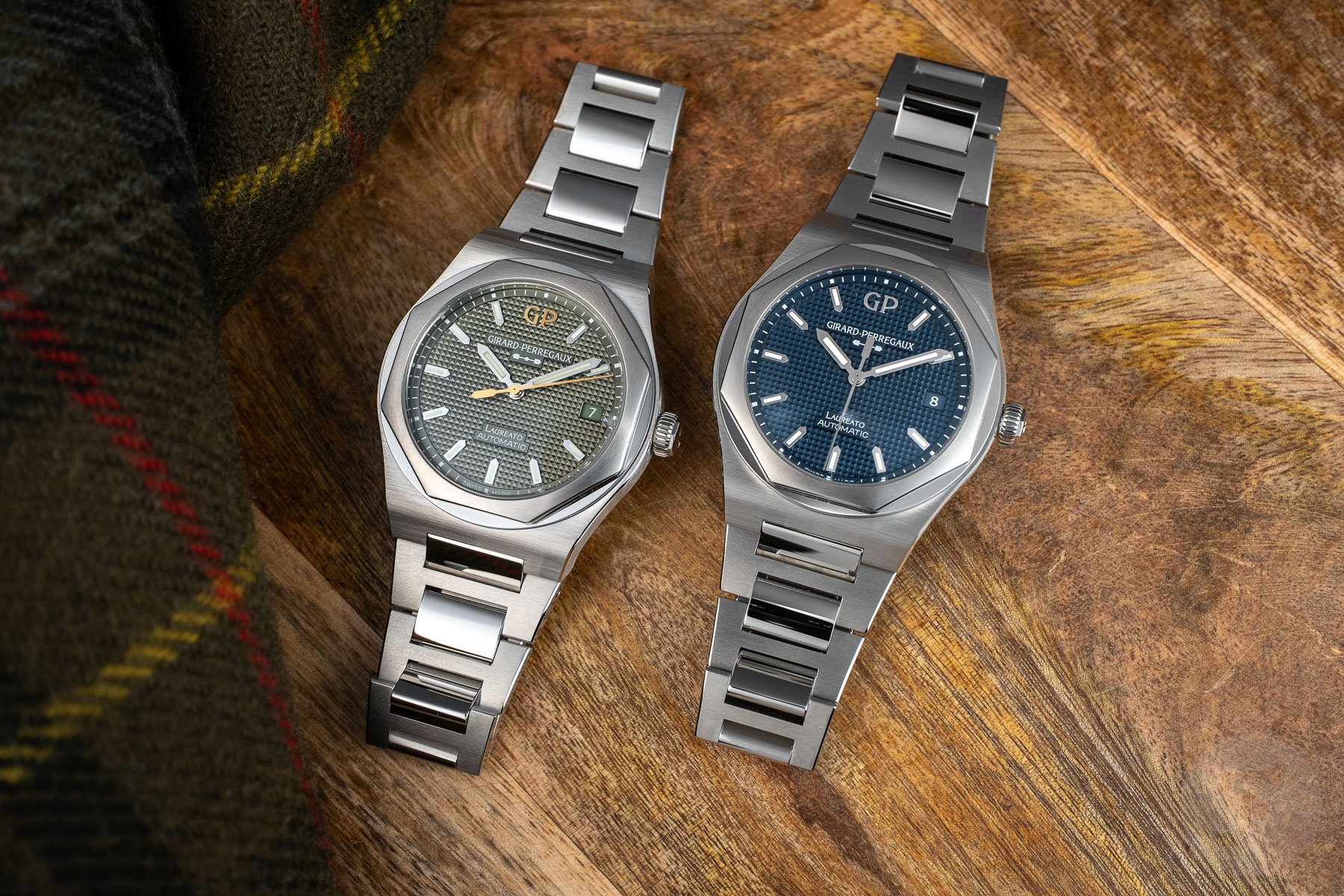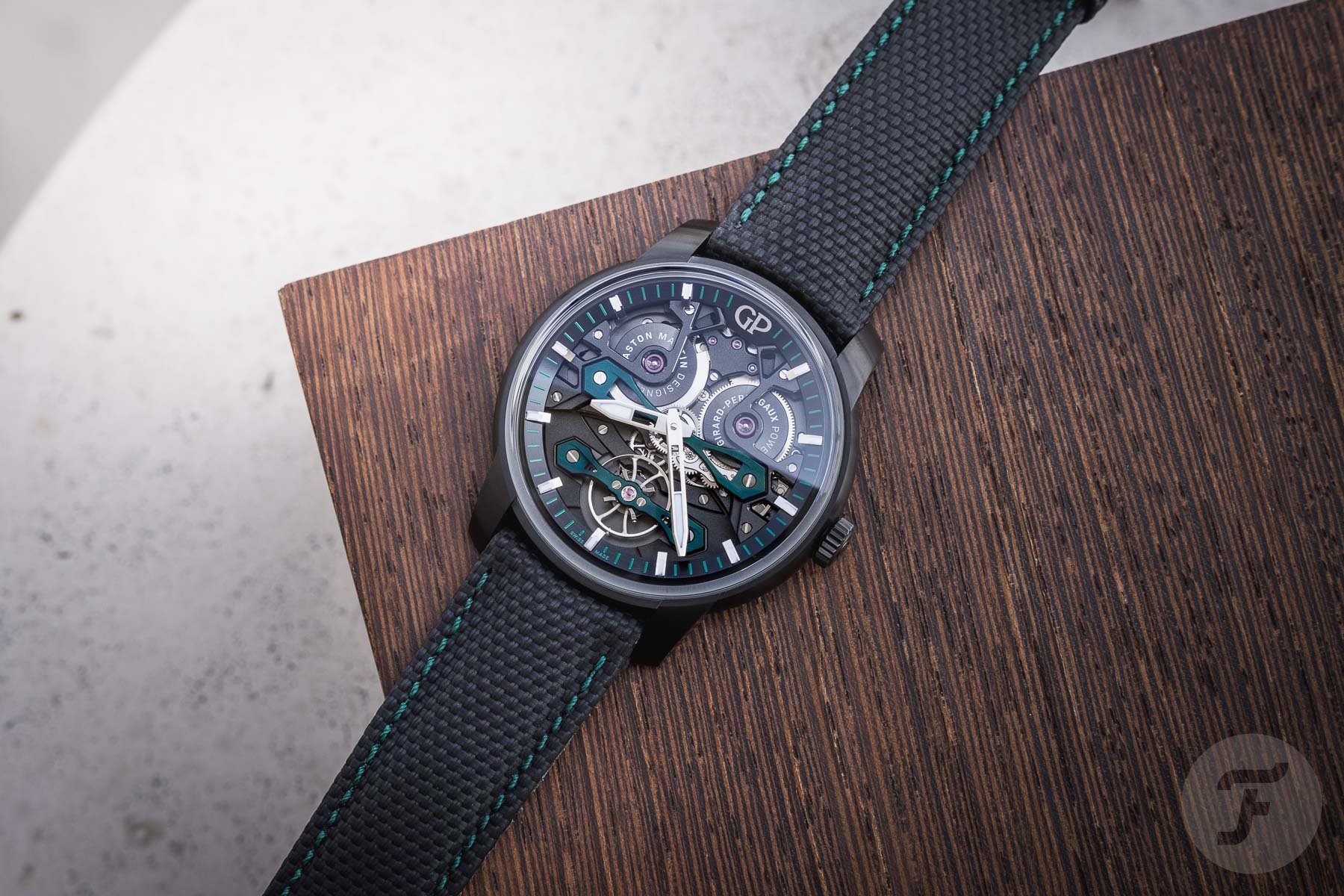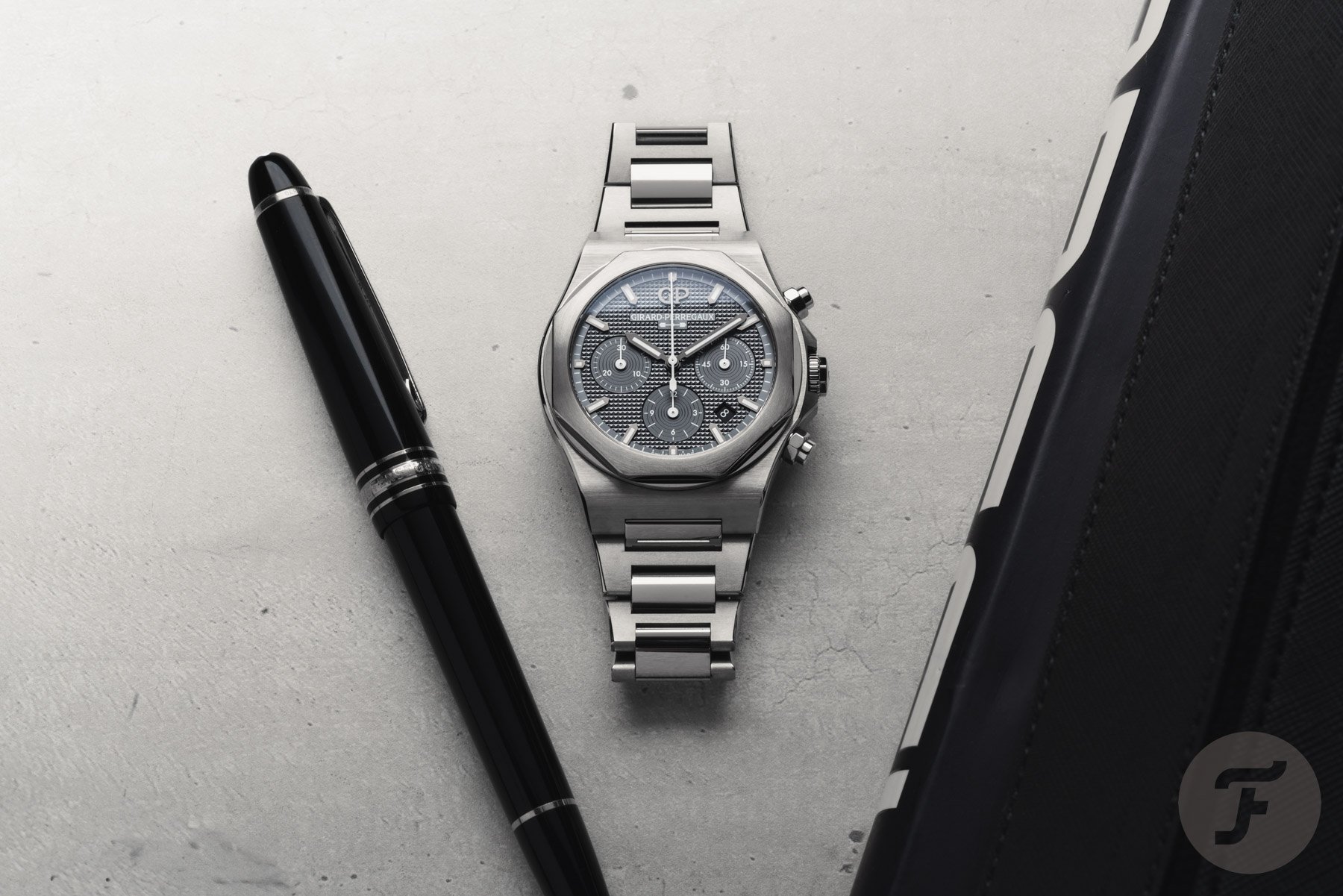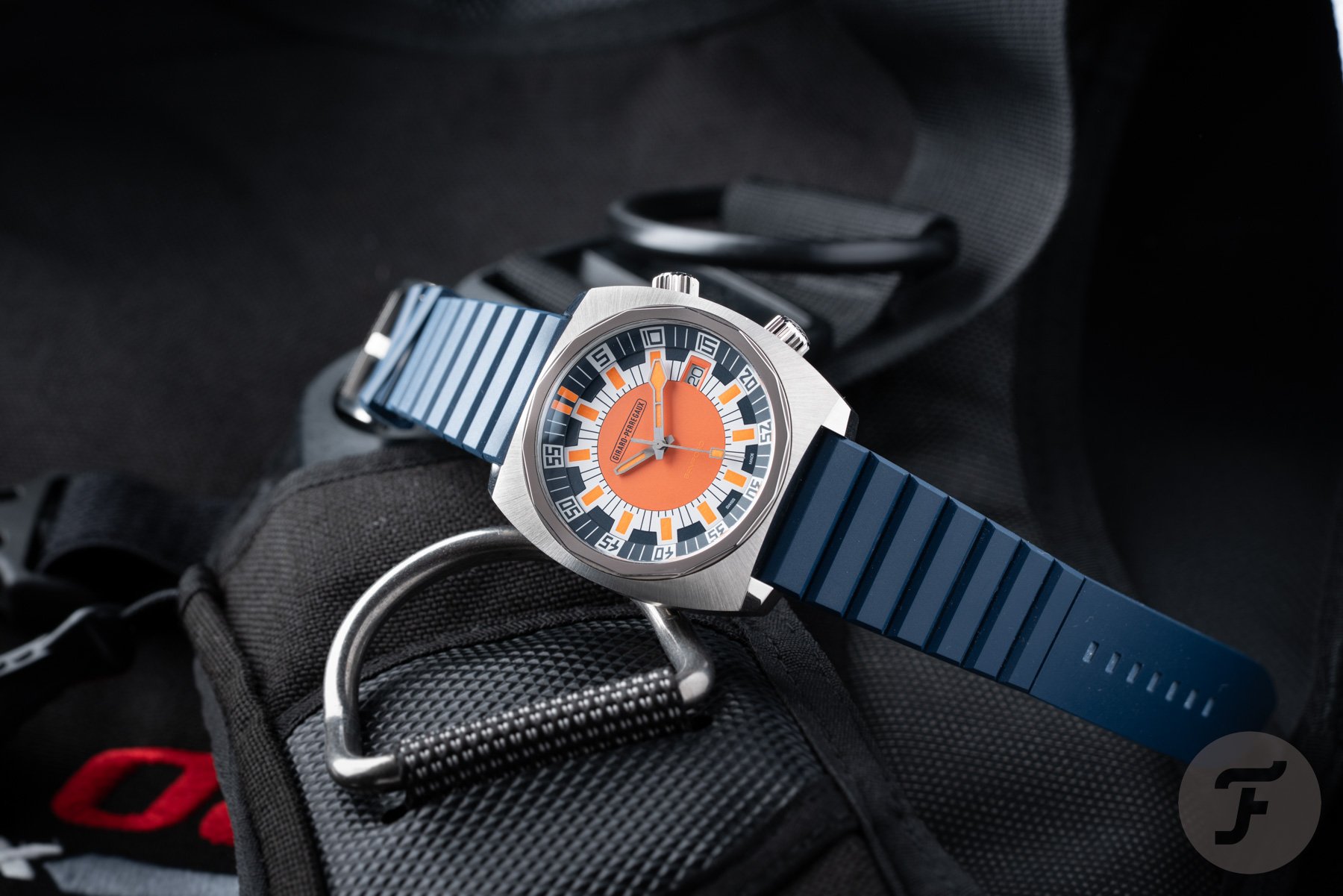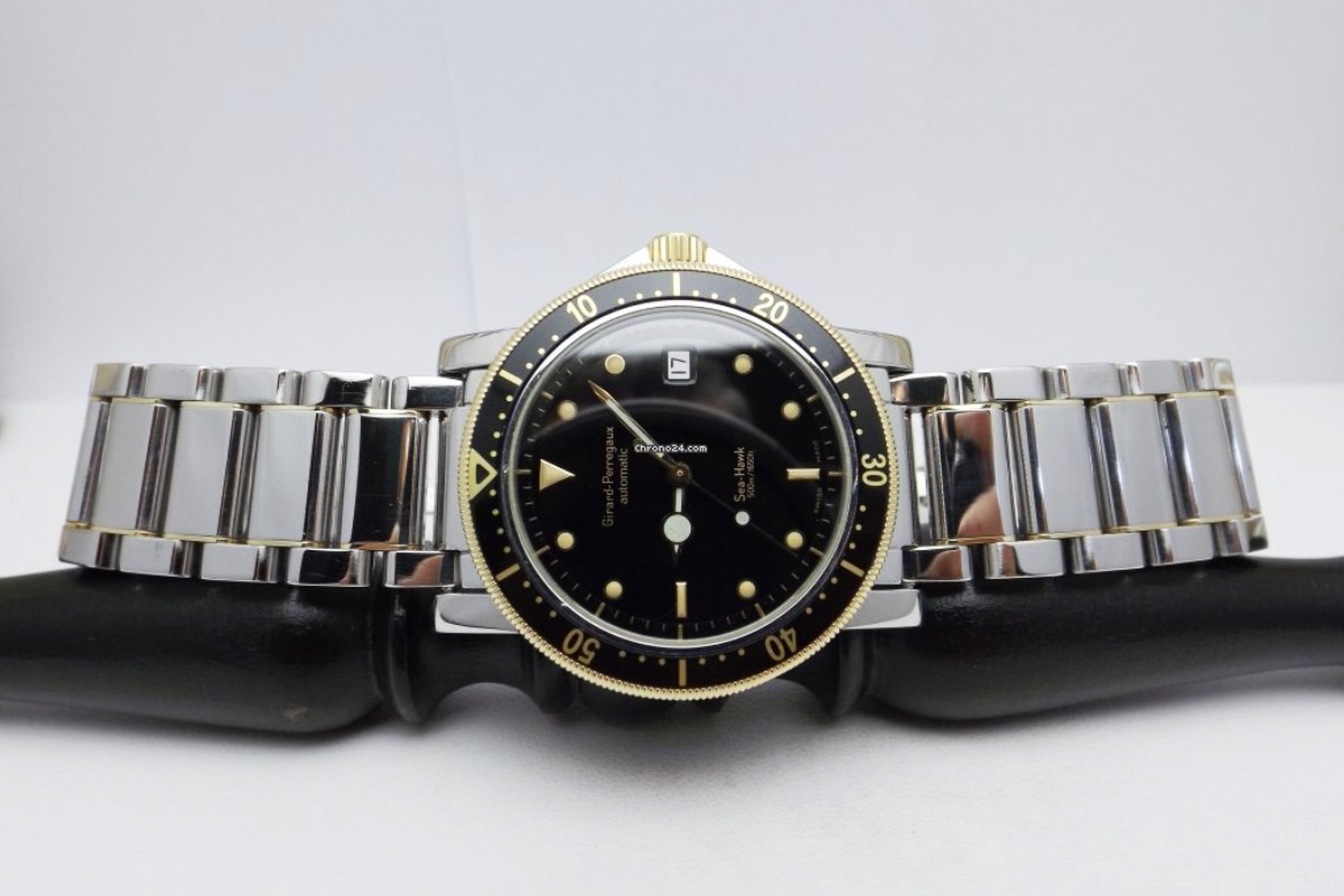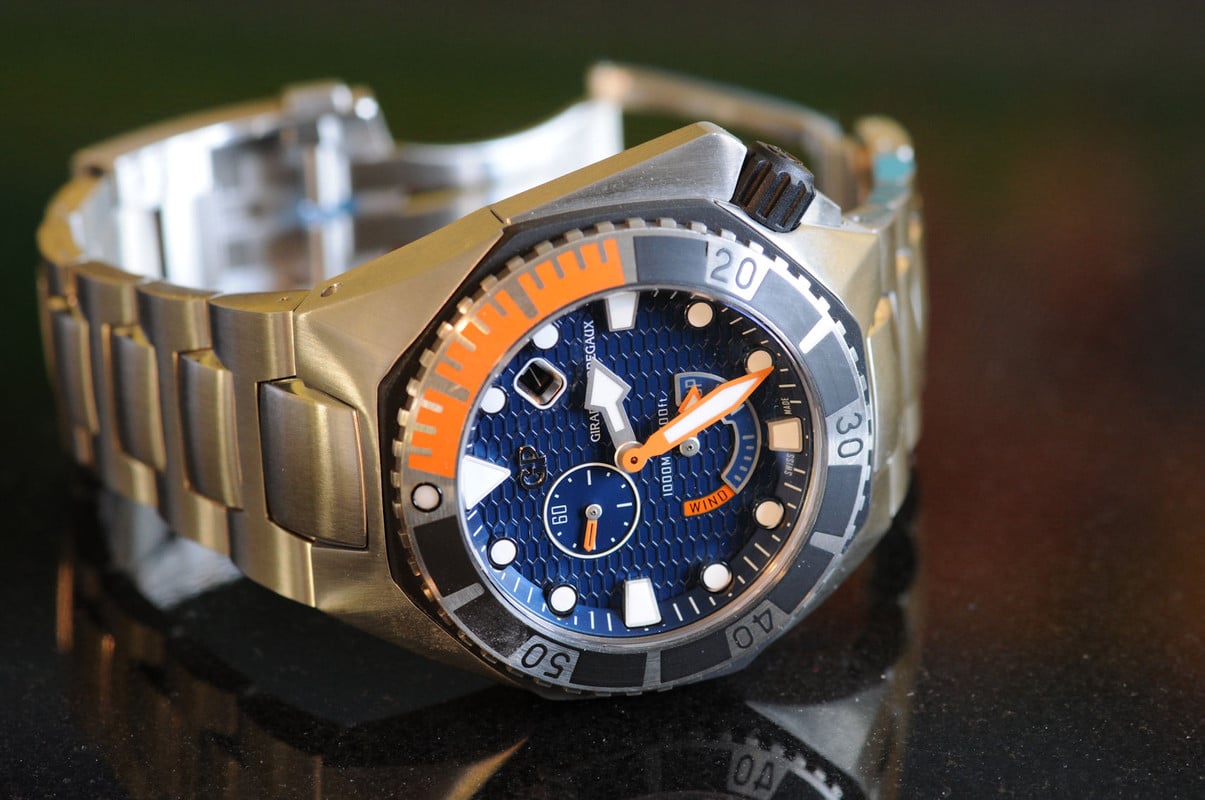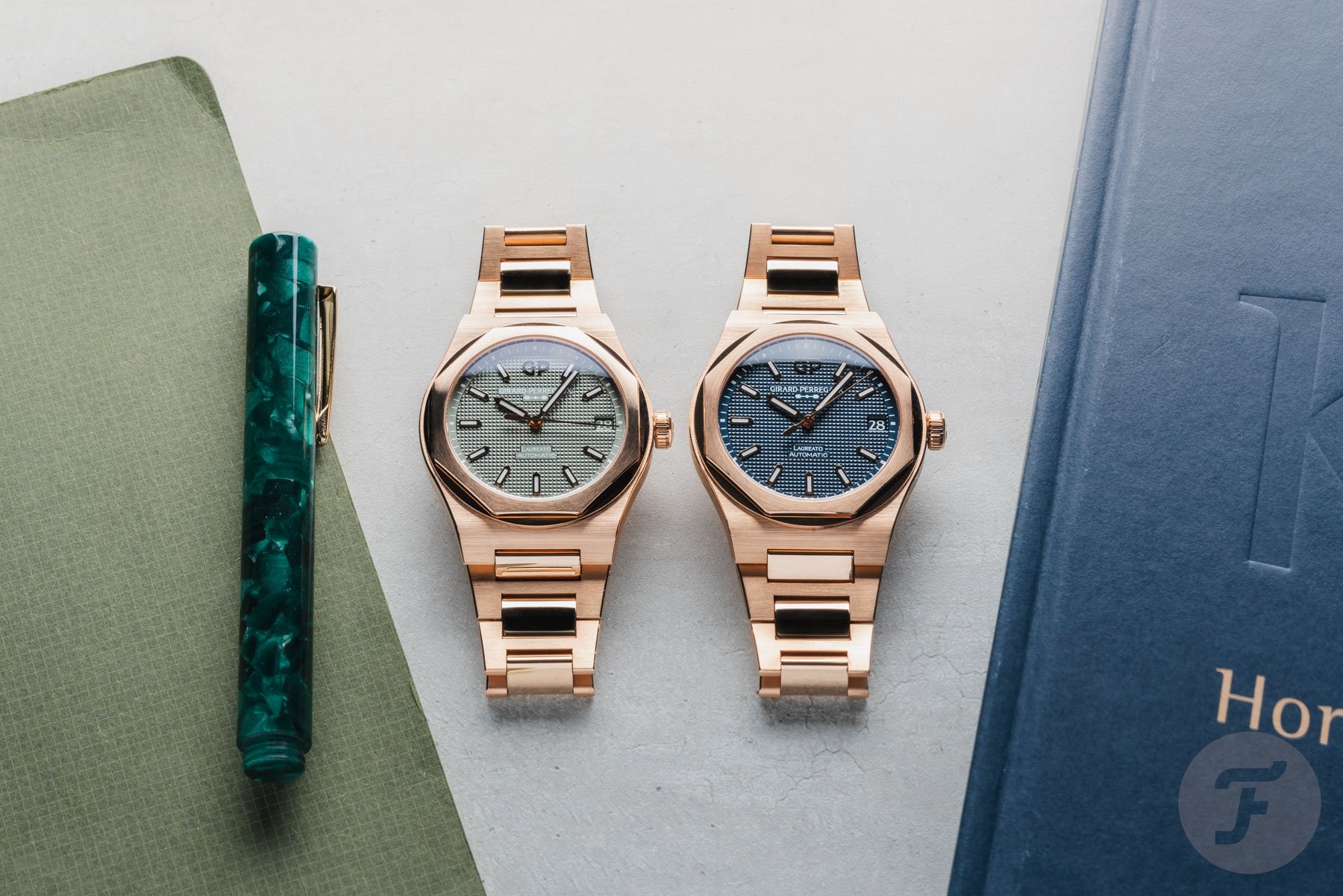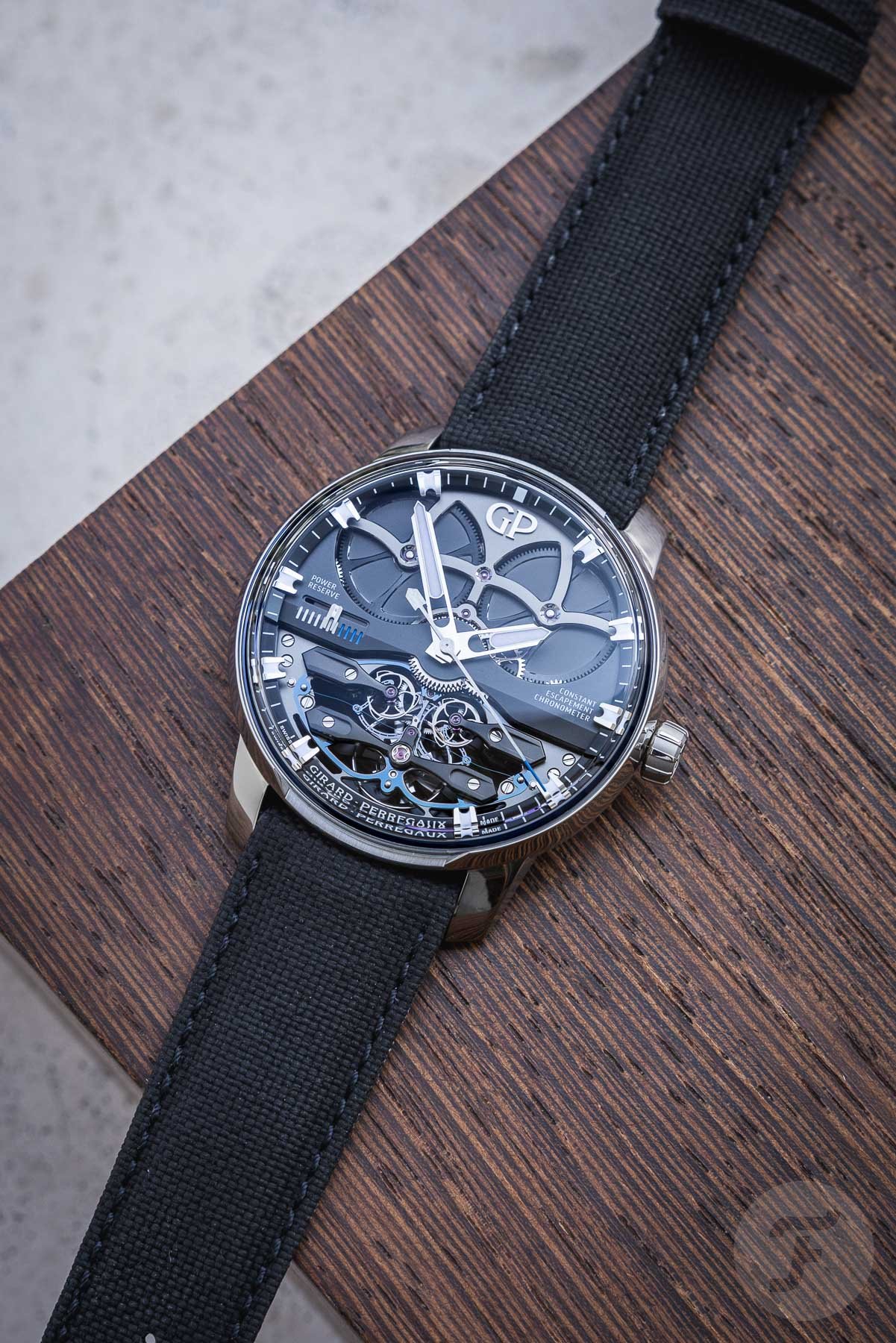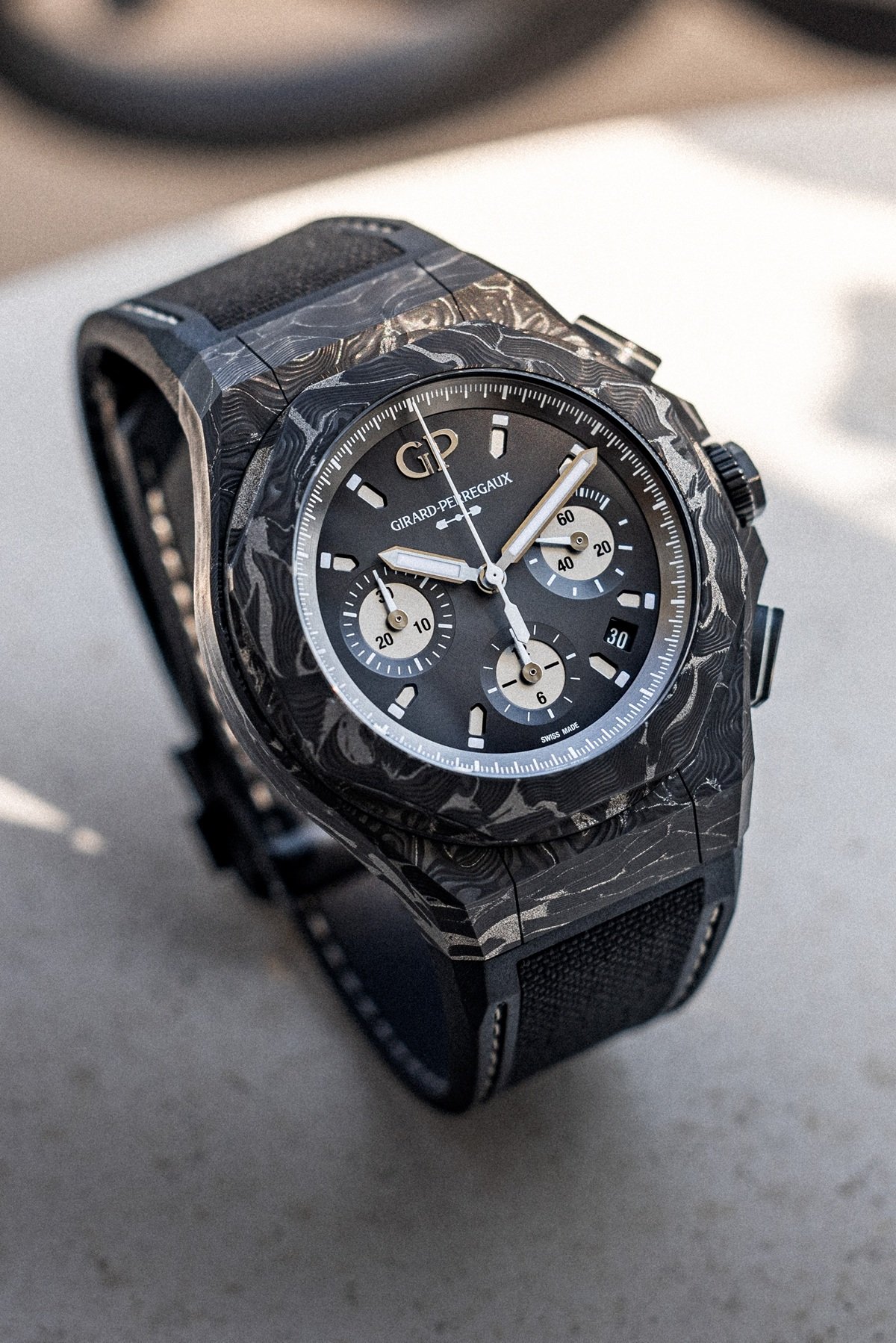The Girard-Perregaux Laureato Is Turning 50 This Year — The Perfect Moment To Reinvent That Watch
As you’ve probably noticed, 2025 is filled to the brim with anniversaries. Whether it’s brands or watches, a plethora of them are celebrating a milestone moment in their existence this year. Turning 50 is quite a milestone. And guess what: this year, the Girard-Perregaux Laureato is turning 50. Yes, that luxury sports watch with an integrated bracelet debuted in 1975 and shows no signs of aging. Or does it? The Laureato still has timeless good looks, but it’s also overshadowed by so many “kindred spirits” from brands Girard-Perregaux used to compete with closely. The Laureato’s anniversary year is the perfect time for GP to plot a different course for its sophisticated sports watch and the entire brand. Here’s some unsolicited advice from the heart, including a plea to bring back the Sea Hawk.
Look, I know I’m taking a risk here, but my love for the brand makes me do this. I know unsolicited advice can feel like judgment and be unhelpful. And I also know that the road to hell is paved with good intentions, but I will continue with this article, even if it could damage the relationship with the brand. But please believe me, people at Girard-Perregaux, I don’t want you to feel undervalued. It’s just that I feel a need to be helpful or something, even without knowing the potentially grandiose plan you’re cooking up right now that will blow the watch community and market away. The following words come from a place of love for the brand.
The Girard-Perregaux Laureato is turning 50 this year: the perfect moment to reinvent the brand
When I first became interested in watchmaking, Girard-Perregaux was a brand I looked up to and perceived as one of the true icons of Haute Horlogerie. Since I read about the brand, which has a history dating back to 1791 and a string of interesting/complicated watches under its belt, in my formative years, GP was, is, and will forever be close to my heart. That position comes with consequences, though. Something you care about can count on attention, close observation, and scrutiny. With a 234-year history, Girard-Perregaux has quite a story to tell. I will leave that to the brand and focus on more recent events. I want to address two things. The first is the absence of the Sea Hawk dive watch in the current collection, and the second is the position and perception of the Laureato.
Five collections, but it should be six
The current GP collection contains five product lines — Laureato, Bridges, 1966, Vintage 1945, and Cat’s Eye, a collection of ladies’ watches. The five-watch Vintage 1945 collection contains curved rectangular timepieces, the 1966 watches are round classic models, and the Bridges collection shows 46 watches playing with the Three Bridges concept invented in 1867 by Constant Girard. The Laureato collection holds 44 watches, including different Aston Martin models.
The five collections cover most categories, but a collection of dive watches is nowhere to be found. The recently launched Deep Diver Legacy Edition, a collaboration with Bamford, is the exception that proves my point. There is a solitary diver in the GP collection, and to make matters worse, it’s a collaboration and a limited edition. In my view, the sole purpose of the retro-styled, colorful, funky dive watch is to point out that the Sea Hawk must return to the GP lineup.
Why did the Sea Hawk go extinct?
What happened to the Sea Hawk, anyway? The last sighting of it on the Fratello website was in 2013! RJ did a hands-on with the Sea Hawk III ref. 49960-19-631-FK6A, a 44 × 17.1mm timepiece of the last but hopefully not final generation. In the 1940s, Girard-Perregaux introduced a collection of Sea Hawk watches that did not come close to the last iterations in terms of design but were already water resistant. These 31–32mm watches had a utilitarian military aesthetic. Post-war-era Sea Hawk designs shifted from military looks, bridging the gap between tool and dress watches.
The Deep Diver line, a sturdy member of the Sea Hawk family, debuted in the late 1950s. These watches, made through the 1970s, were outfitted with Gyromatic automatic movements and can be considered the founders of the serious Sea Hawk dive watch. In the 1960s and ’70s, GP produced more dressy Sea Hawk models outfitted with hand-winding movements. The Sea Hawk name disappeared from the GP catalog for a while, only to return in 1988 as the Sea Hawk 7000 and 7100. These Sea Hawks were made until the mid-1990s, and then the name vanished again.
The Macaluso years
The Sea Hawk II debuted in 2002. Italian Luigi “Gino” Macaluso (1948–2010) was a former navigator in the Fiat rally team in the early 1970s, owner of the Sowind Group (the holding company for Girard-Perregaux), and a watch designer. Macaluso acquired GP in 1989, and among his achievements were the creation of a large number of in-house Haute Horlogerie movements, Ferrari timepieces, and the design and introduction of the Sea Hawk II. The 42mm dive watch had a distinctive crown placement at 4 o’clock with a unique crown protector that sits flush with the case. This is the Sea Hawk for me. It’s difficult to choose a particular reference, but the steel “To John Harrison” tribute limited-edition model with a blue dial (ref. 4991) and the regular gray-dial version (ref. 49920.0.11.2042) are both very much to my liking.
Other Sea Hawk IIs from that era featured a flying tourbillon peeking through a hole in the carbon fiber dial, and the 44mm Sea Hawk II Pro 3000M could withstand water pressure to 300 ATM. The Sea Hawk III, introduced in 2013, could show off a 1,000m depth rating. It was a redesigned, more angular version of the II that was only in production for two years. In 2015, the Macaluso family sold its stake in Sowind Group to Kering (formerly PPR), and the Sea Hawk was axed. Ten years later, there’s still no Sea Hawk IV.
Sea Hawk IV to the rescue
The Kering era lasted seven years. In 2022, the French luxury group announced the finalization of the management buyout of Girard-Perregaux and Ulysse Nardin. CEO of both brands, Patrick Pruniaux, conducted the operation, and he now serves as chair and CEO of the two brands within Sowind Group. The man has some serious experience in the watchmaking industry. He started at TAG Heuer and later worked on the launch of the Apple Watch. He also has to deal with a cool-down of the current watch climate. To warm things up for GP, he hired Marc Michel-Amadry, the former chief commercial officer at IWC, as the new managing director to lead day-to-day operations in the La Chaux-de-Fonds headquarters. This is necessary because, according to Morgan Stanley estimates, GP produced around 7,900 watches last year with sales of about CHF 63 million, a revenue decline of about 23% from 2023.
Could introducing the Sea Hawk IV be a helpful tool to boost both production and revenue? That’s oversimplifying matters gravely, but I believe that a dive watch is a must in the GP catalog. That’s especially true if it can go head to head with Blancpain’s Fifty Fathoms and Omega’s Seamaster Diver 300M. The GP Sea Hawk II and the two competitors have common roots in the shape of designs that (still) show a late 1990s/early 2000s vibe. An audience that lusted after these sporty watches that were out of reach now has the financial means to make that teenage dream come true. If GP stays close to the recognizable, asymmetric style of the Sea Hawk II and puts it between the Fifty Fathoms and the Seamaster in terms of price, I predict a winner.
Last but not least, the Laureato
This year, the Girard-Perregaux Laureato is turning 50, and everybody in the watch community expects something special to come out. I have some ideas, and since I’m giving unsolicited advice, here are a couple. What about an exact copy of the 1975 bimetallic Quartz Chronometer, a tonneau-shaped watch with an octagonal bezel and the forebear of the Laureato, with 2025 build quality and a solar-powered movement? On the other side of the spectrum, I’m envisioning a hero product like a Laureato featuring the Neo Constant Escapement, the evolutionary successor to the Constant Escapement L.M. that won the 2013 Aiguille d’Or at the Grand Prix d’Horlogerie de Genève. Not only would it be something new for a watch that predates the Nautilus, Ingenieur, and Overseas, but it would also serve as a recognizable platform for GP’s Haute Horlogerie capabilities.
Less choice, more luxury
Girard-Perregaux divides the 44 Laureato references in the current collection into six subcategories. Plenty of these different Laureatos made their way to Fratello HQ for a hands-on review and were received well. Still, 44 references are a lot for a brand that produces under 8,000 watches annually. A more condensed Laureato catalog prevents people from getting lost in the collection and subcategories and keeps them focused. Fewer references are a show of confidence. “Less choice, more luxury” is an idea that aligns with the “Paradox of Luxury.” This theory suggests that limiting options can enhance satisfaction and create a sense of exclusivity. Having too many choices can lead to decision paralysis, increased anxiety, and regret, ultimately reducing overall satisfaction. It is not something you want in a vital anniversary year during a challenging time for luxury watches.
Do you have unsolicited advice for Girard-Perregaux now that the Laureato is turning 50? If so, please write it down in the comments section below.

